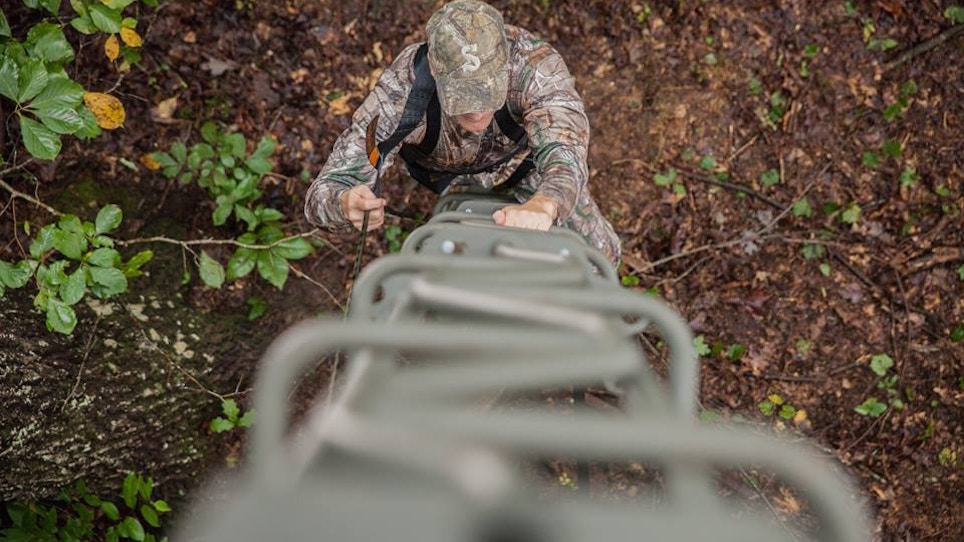Falls from treestands are the leading cause of deaths among hunters, and it’s believed that as many as one in 10 of us will — at some point in our hunting career — fall from an elevated stand. The results of these falls can be devastating, and hunters need to take every precaution to prevent such injuries from occurring.
Traditionally, wearing a safety harness has been the best defense against falling while hunting, but that’s not the only step that you should take to prevent injury. Recently, I had a chance to visit Stress Engineering Services in Cincinnati where, as the name implies, new products are placed under stress to determine how well they stand up to abuse. One of the consumer products that the team at Stress Engineering tests are treestands, and on any given day the team has sensors and monitors hooked up to stands that are being torture tested to identify weak points in the system. As a hunter, it’s good to know that treestand companies are putting their products to the test.
The data that Stress Engineering has collected offers a great deal of information that is of value to hunters. When I went there I was anticipating finding weak points in treestands and identifying the primary causes of mechanical failures in stands—the weakest link. And, as I expected, there was a weak link in the system—the hunter.
“The number one cause of mechanical failures in treestands in improper assembly and installation,” says Carl Morrow, an engineer at Stress. In fact, the vast majority of treestand failures have nothing to do with the stand itself but rather with the way in which the stand was assembled. Failure to follow steps in the process or incorrectly piecing your stand together can have serious consequences.
To that end, it’s absolutely critical to be certain that your treestand is properly assembled. That may mean you have to take some extra time and actually read the directions, but you must remember that you are piecing together equipment that you are relying on to support you several feet and maybe even a couple stories in the air. Treestand manufacturers supply books and DVDs on proper assembly, so you need to take the time to be absolutely certain that your stand is properly pieced together. If you have questions or don’t understand the process then don’t guess, call the manufacturer. You can prevent the majority of mechanical failures in treestands by simply following manufacturer’s assembly guidelines, but there’s one more critical factor to staying safe in the stand and that is periodically checking your equipment.
Well-built stands can, over time, become weaker as they are exposed to the elements. This weathering process rarely effect the metal and plastic components, although all stand components need to be evaluated before you climb into the stand on opening day. But certain items like nylon straps which can weaken over time or may be chewed apart by animals need to be replaced. And, of course, safety harnesses are essential, but you need to be sure that the harness you have is designed so that you won’t be injured in the event of a fall.
There’s a certain level of risk that we assume each and every time we hunt from a treestand, but smart hunters will take every opportunity to minimize those risks. And that starts with taking the time to ensure that the stand that is holding you off the ground is properly assembled.
Featured image: Summit Treestands






